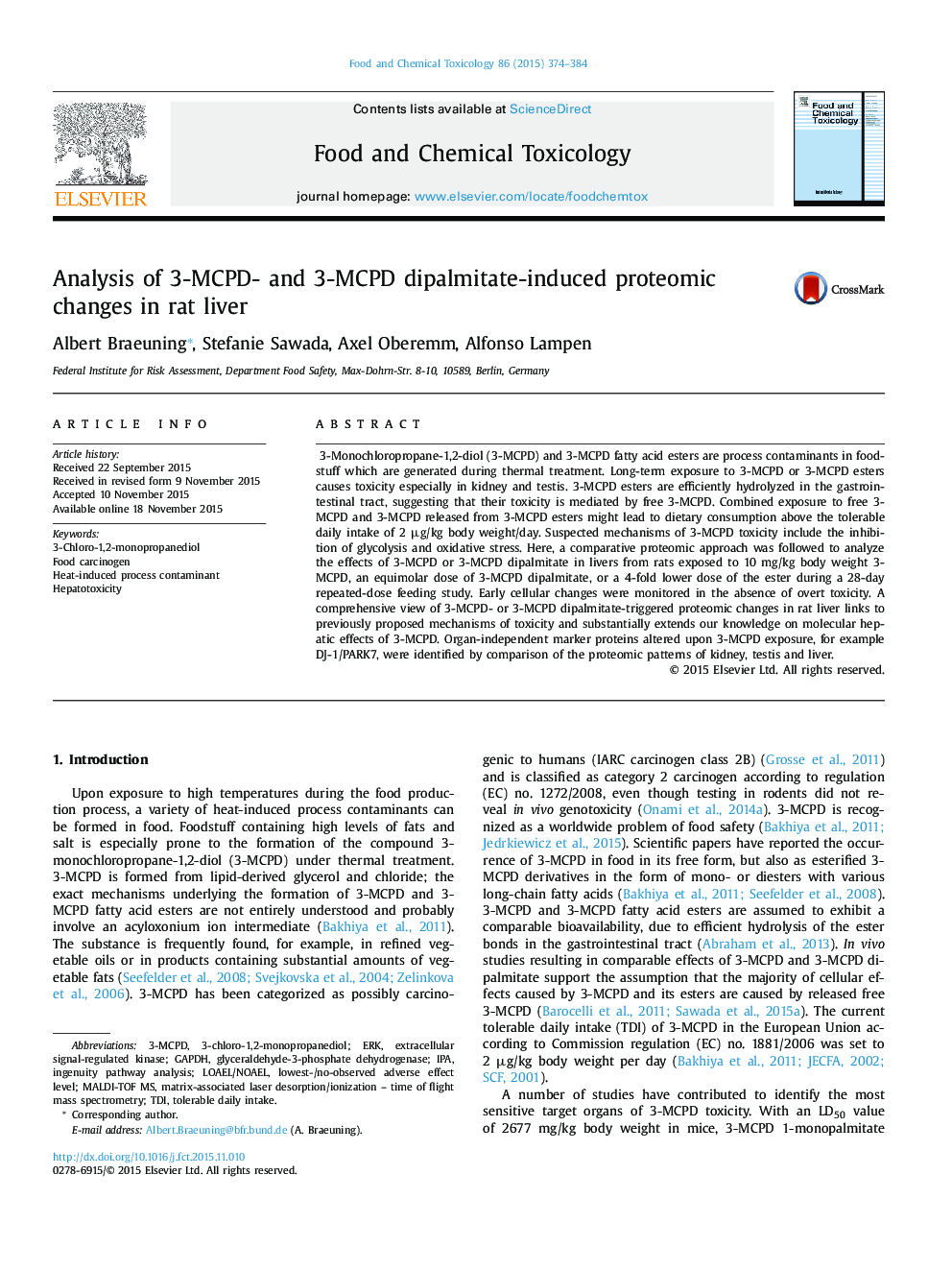| Article ID | Journal | Published Year | Pages | File Type |
|---|---|---|---|---|
| 5849632 | Food and Chemical Toxicology | 2015 | 11 Pages |
Abstract
3-Monochloropropane-1,2-diol (3-MCPD) and 3-MCPD fatty acid esters are process contaminants in foodstuff which are generated during thermal treatment. Long-term exposure to 3-MCPD or 3-MCPD esters causes toxicity especially in kidney and testis. 3-MCPD esters are efficiently hydrolyzed in the gastrointestinal tract, suggesting that their toxicity is mediated by free 3-MCPD. Combined exposure to free 3-MCPD and 3-MCPD released from 3-MCPD esters might lead to dietary consumption above the tolerable daily intake of 2 μg/kg body weight/day. Suspected mechanisms of 3-MCPD toxicity include the inhibition of glycolysis and oxidative stress. Here, a comparative proteomic approach was followed to analyze the effects of 3-MCPD or 3-MCPD dipalmitate in livers from rats exposed to 10 mg/kg body weight 3-MCPD, an equimolar dose of 3-MCPD dipalmitate, or a 4-fold lower dose of the ester during a 28-day repeated-dose feeding study. Early cellular changes were monitored in the absence of overt toxicity. A comprehensive view of 3-MCPD- or 3-MCPD dipalmitate-triggered proteomic changes in rat liver links to previously proposed mechanisms of toxicity and substantially extends our knowledge on molecular hepatic effects of 3-MCPD. Organ-independent marker proteins altered upon 3-MCPD exposure, for example DJ-1/PARK7, were identified by comparison of the proteomic patterns of kidney, testis and liver.
Keywords
Related Topics
Life Sciences
Agricultural and Biological Sciences
Food Science
Authors
Albert Braeuning, Stefanie Sawada, Axel Oberemm, Alfonso Lampen,
